
The Magician (I), also known as The Magus or The Juggler, is the first trump or Major Arcana card in most traditional tarot decks. It is used in game playing and divination.

The High Priestess (II) is the second Major Arcana card in cartomantic Tarot decks. It is based on the 2nd trump of Tarot card packs. In the first Tarot pack with inscriptions, the 18th-century woodcut Tarot de Marseilles, this figure is crowned with the Papal tiara and labelled La Papesse, the Popess, a possible reference to the legend of Pope Joan.

The Empress (III) is the third trump or Major Arcana card in traditional tarot decks. It is used in card games as well as divination.
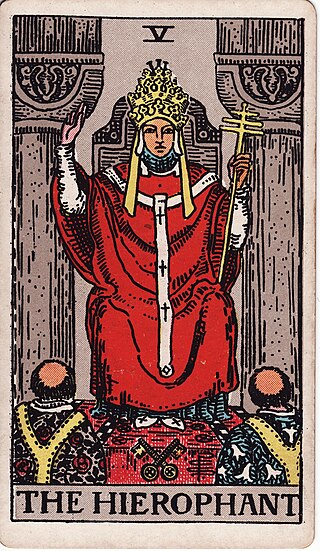
The Hierophant (V), alternatively depicted as The Pope or The High Priest (as a counterpart to "The High Priestess") is the fifth card of the Major Arcana in occult Tarot decks used in divination. It was identified as the Pope in early decks like Tarot of Marseilles, while modern decks like Rider–Waite Tarot may use the term hierophant (Ancient Greek: ἱεροφάντης), a person who brings religious congregants into the presence of that which is deemed "holy".

Death (XIII) is the 13th trump or Major Arcana card in most traditional tarot decks. It is used in tarot card games as well as in divination. The card typically depicts the Grim Reaper, and when used for divination is often interpreted as signifying major changes in a person's life.

The Hanged Man (XII) is the twelfth Major Arcana card in most traditional tarot decks. It is used in game playing as well as in divination.
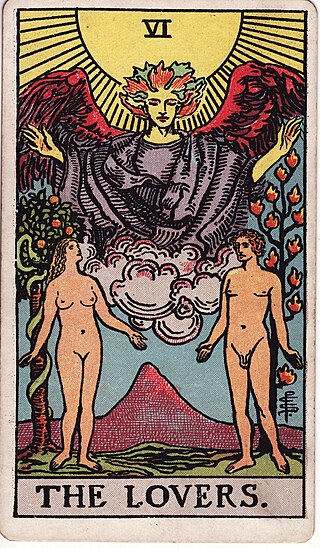
The Lovers (VI) is the sixth trump or Major Arcana card in most traditional Tarot decks. It is used in game playing as well as in divination.
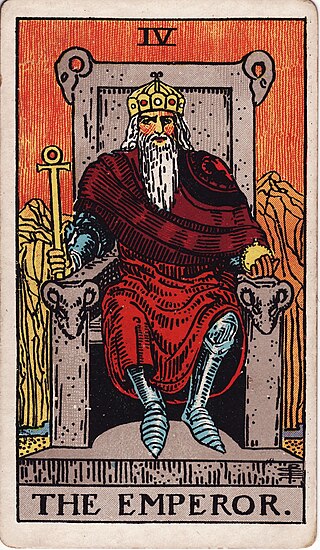
The Emperor (IV) is the fourth trump or Major Arcana card in traditional tarot decks. It is used in game playing as well as in divination.

The Chariot (VII) is the seventh trump or Major Arcana card in most traditional tarot decks. It is used in game playing as well as in divination.

Strength is a Major Arcana tarot card, and is numbered either XI or VIII, depending on the deck. Historically it was called Fortitude, and in the Thoth Tarot deck it is called Lust. This card is used in game playing as well as in divination.
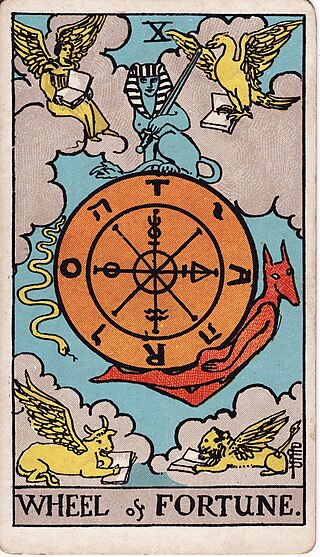
Wheel of Fortune is one of 78 cards in a tarot deck and is the tenth trump or Major Arcana card in most tarot decks. It is used in game playing as well as in divination.

Justice is a Major Arcana tarot card, numbered either VIII or XI, depending on the deck. This card is used in game playing as well as in divination.
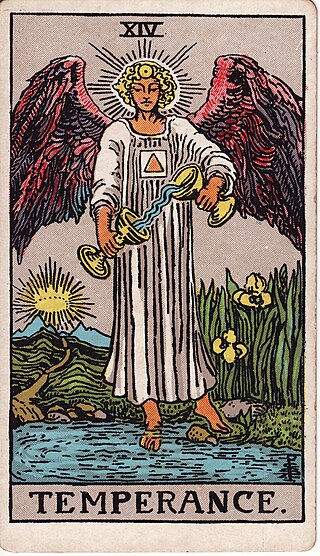
Temperance (XIV) is one of the 22 Major Arcana cards in Tarot decks. It is usually numbered 14. It depicts a figure which represents the virtue Temperance. Along with Justice and Strength, it is one of three Virtues which are given their own cards in traditional tarot. It is used in both game playing and in divination.

The Devil (XV) is the fifteenth trump or Major Arcana card in most traditional tarot decks. It is used in game playing as well as in divination.

The Star (XVII) is the 17th ranking or Major Arcana card in most traditional tarot decks. It is used in game playing as well as in divination.

The Moon (XVIII) is the eighteenth trump or Major Arcana card in most traditional tarot decks. It is used in game playing as well as in divination.

The Sun (XIX) is the nineteenth trump or Major Arcana card in most traditional tarot decks. It is used in game playing as well as in divination.

Judgement (XX), or in some decks spelled Judgment, is a tarot card, part of the Major Arcana suit usually comprising 22 cards.

Tarot card reading is a form of cartomancy whereby practitioners use tarot cards to purportedly gain insight into the past, present or future. They formulate a question, then draw cards to interpret them for this end. A traditional tarot deck consists of 78 cards, which can be split into two groups, the Major Arcana and Minor Arcana. French-suited playing cards can also be used; as can any card system with suits assigned to identifiable elements.

The Fool is one of the 78 cards in a tarot deck. In tarot card reading, it is one of the 22 Major Arcana, sometimes numbered as 0 or XXII. However, in decks designed for playing traditional tarot card games, it is typically unnumbered, as it is not one of the 21 trump cards and instead serves a unique purpose by itself.





















